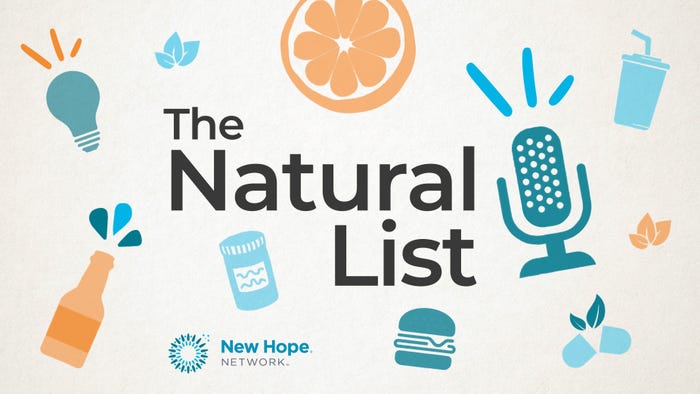NDIs: 8 provisions that could bankrupt the supplements industry
Is this the FDA's back-door attempt at pre-market approval?

The United Natural Products Alliance has detailed eight provisions in the FDA’s new draft guidance on New Dietary Ingredients that, if unchallenged, the trade group says could cost the industry anywhere from $2 billion to $6 billion.
Every supplement company would feel the regulatory burden of conducting new toxicity studies—in most cases, on ingredients and products that have already been safely on the market for years—and hiring experts and others to develop NDI notifications.
“These are really, really large numbers,” said Loren Israelsen, president of UNPA, which is holding a day-long conference on the subject in Salt Lake City on Sept. 8. “If this is the way NDIs will proceed, a lot of companies will say we will not do it, this will bankrupt us.”
The NDI notification proviso was part of the seminal 1994 legislation that liberated the supplements industry, the Dietary Supplements Health and Education Act. It charged the FDA to write a document around the issue of new dietary ingredients that might come onto the market after the passage of DSHEA.
It took the FDA 17 years to come up with its first draft document. That was so disliked by the industry that it took intervention by the two authors of DSHEA, Sen. Orin Hatch (R-UT) and Sen. Tom Harkin (D-IA), to point the FDA back to the drawing board. Sen. Harkin has since retired from the Senate.
It’s now five years later that the new draft guidance document has been re-released, and this one in some key ways is even more onerous, according to UNPA’s interpretation of the 102-page document.
While the economic cost is by far the biggest issue, the FDA has seven other issues for the industry to digest, any one of which will trigger a new NDI filing.
“It appears any changes, not just significant changes, could trigger an NDI status,” said Israelsen. “That’s why we’re so concerned. It’s almost anything you would do routinely in the course of research and development, upgraded manufacturing and extraction procedures, filtration, fermentation, the use of improved solvents. These are all triggers to new NDI status, this encompasses almost anything today with ingredients and dietary supplements.”
Here is the list of seven additional new requirements that the FDA would like to put upon the ingredients and supplements industries.
Any manufacturing change to an ingredient or product. Examples include changing the physic-chemical structure of an ingredient, any impurities, methods to increase bioavailability of an ingredient, toxicity studies, and any post-DSHEA solvent used—anything other than water or ethanol, such as supercritical CO2, hexane, methanol and others.
Any chemical alteration. Notably, this would compel companies that have previously gone through a GRAS (Generally Recognized As Safe) notification to go through an NDI notification process as well. “It would be our view to look at significant manufacturing changes and have some definitions around that,” said Israelsen. “We cannot be held to a standard where any manufacturing change triggers an NDI status.” And any nanotech ingredient would be subject to an NDI as well.
Master Files. This is the one aspect that UNPA says it supports. A master file holder, for instance an ingredient supplier, can give its ingredient information to a third-party customer, say a contract manufacturer, so the co-packer can use it to advance its own NDI. This was proposed by the FDA to eliminate with the problem of “piggybacking”—of companies borrowing the NDI status of a competitor’s ingredient.
GRAS status: While supplements companies, as well as many small food companies, get a self-affirmed GRAS status, the FDA is saying everyone has to behave like the large food companies, which routinely go through the GRAS affirmation process through the FDA when bringing new products to market.
Combination policy. If a supplement maker sources an NDI ingredient from a supplier, and then uses another NDI ingredient, the supplement maker would then have to get another NDI for the combination of the two ingredients. “If this is so,” said Israelsen, “we will have an exponential number of new NDIs.”
Pre-DSHEA list. Since 1994, the industry has produced four lists of what it considered ingredients that were on the market before the passage of the legislation. The lists were since combined to one master list. And the FDA, in its wisdom, said that it does not consider that list valid. UNPA does not disagree with the agency that the ODI lists in existence are weak, said Israelsen. Compounding the problem is that, in the intervening 22 years, record-keeping went digital—so any company’s paper records of an ingredient or product, including marketing materials, price lists and manufacturing records, is bordering on the impossible. “The FDA,” said Israelsen, “is looking to have a universe of NDIs with a small pocked of ODIs, with a constantly regenerating list of changes.”
Synthetic botanicals. Examples include resveratrol, vinpocetine, L-theanine, and the biggest of all, synthetic caffeine. “The FDA’s view is these are not dietary ingredients, full stop,” said Israelsen. Notably, some of these ingredients were previously submitted as NDIs and the FDA did not object to them.
Israelsen said his view is to avoid a legislative fight to re-litigate the statutory intent of Congress, though a number of issues as presented need either clarification if not outright dismantling, or at least a sizing down to match the public health and safety mandate. At the end of the day, everyone wants products that are safe for consumers. But if the cost of satisfying the FDA’s new requirements are so burdensome that companies go out of business—and during a time frame of more than two decades when most products have demonstrated consumer safety—then something is truly amiss in this new guidance.
About the Author(s)
You May Also Like




